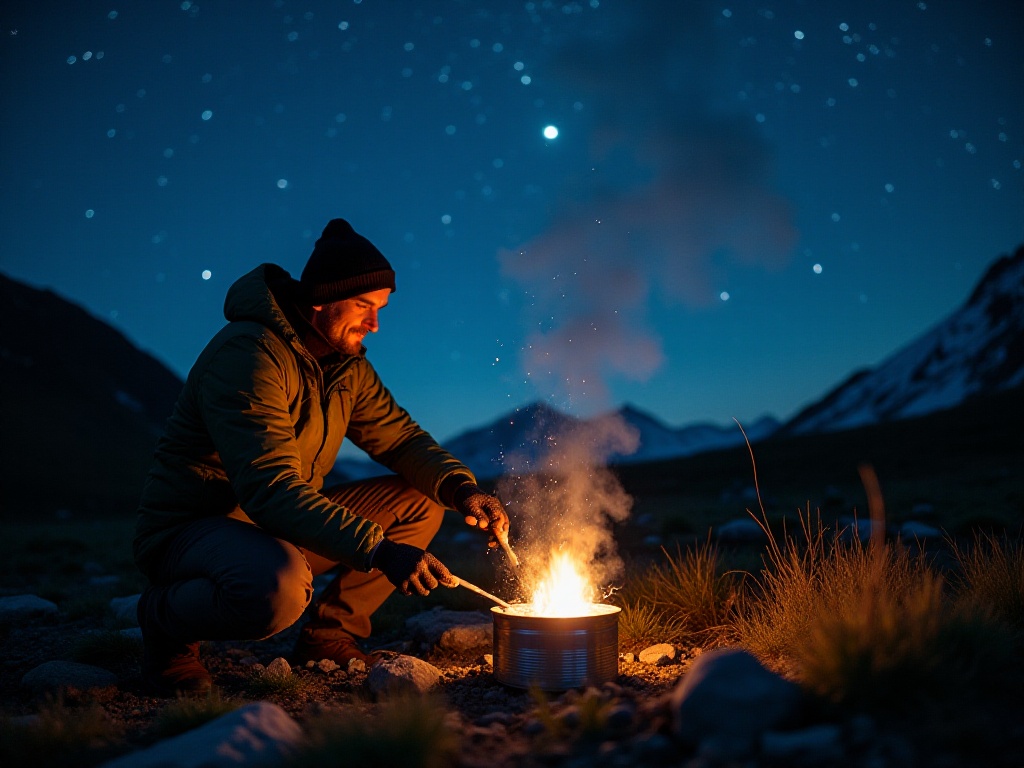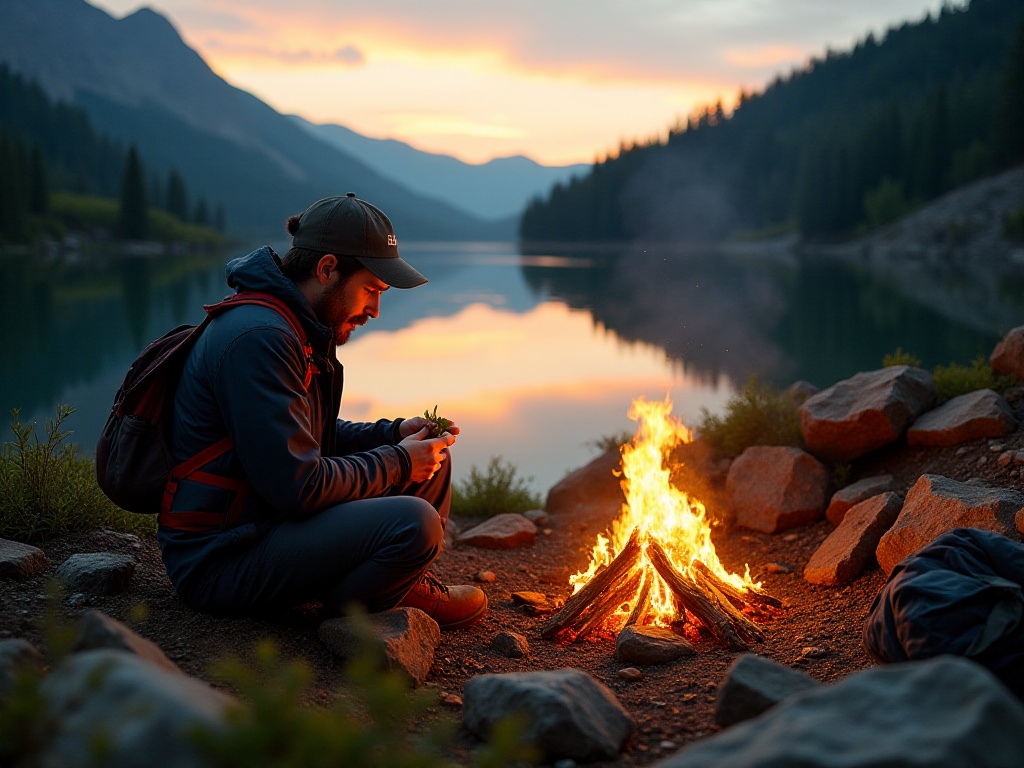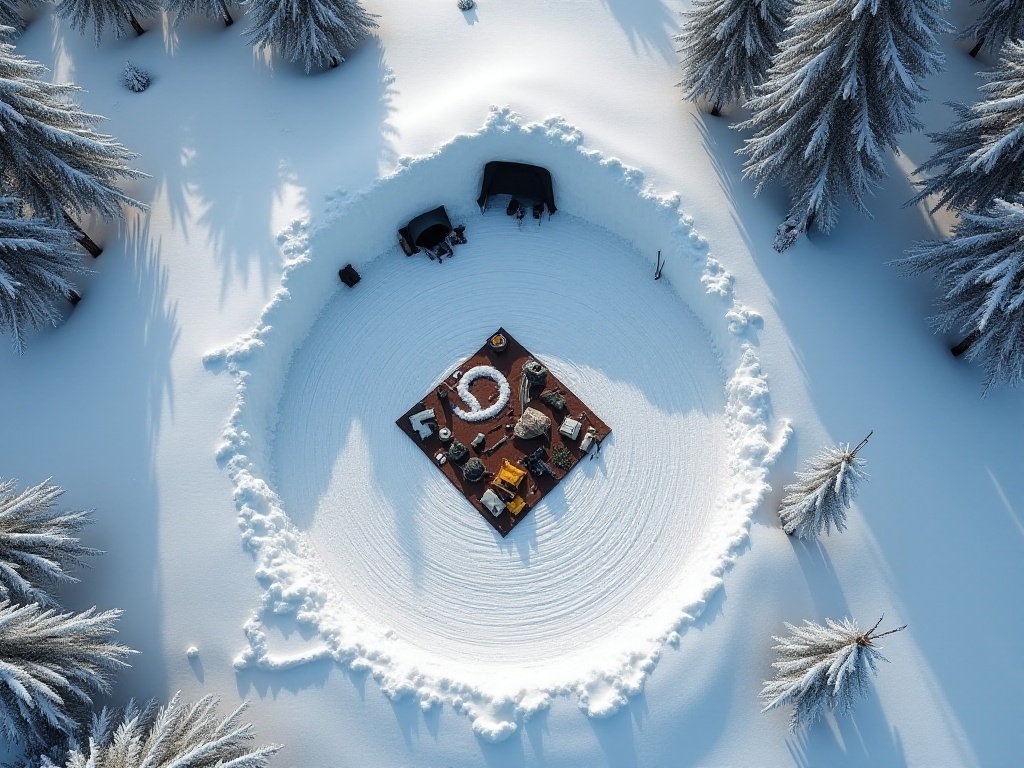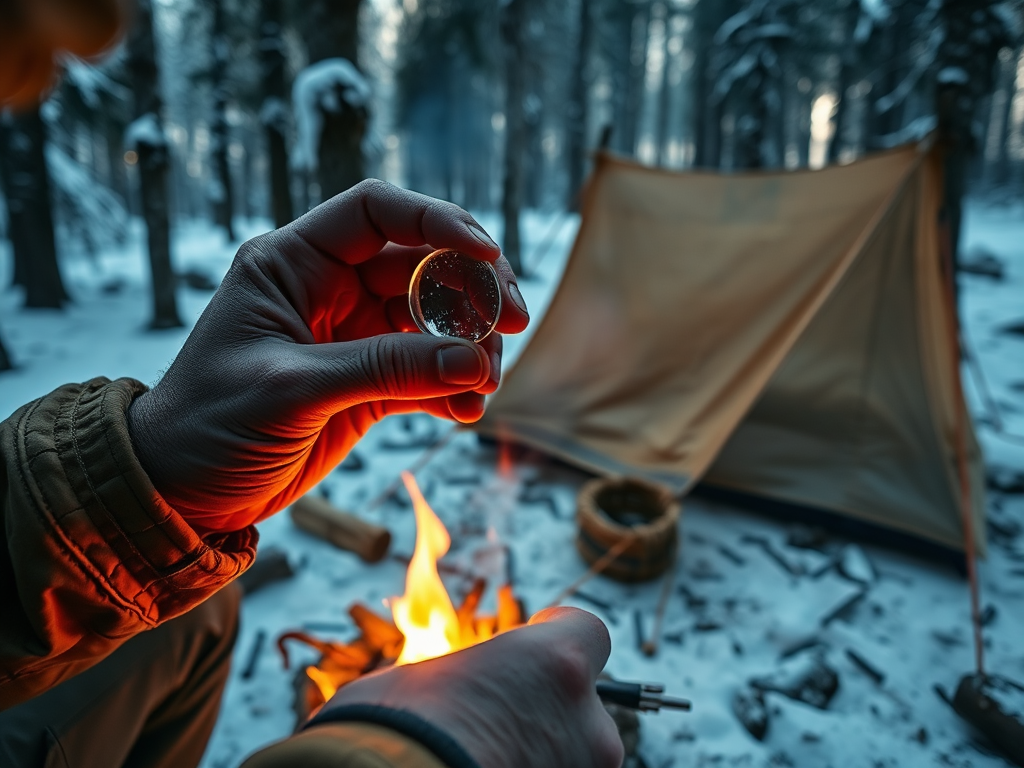Before Heading Out
As someone who has participated in hundreds of outdoor activities, I want to share my wilderness survival experience. Many people think wilderness survival requires extremely hardcore skills, but that's not the case - the most crucial part is thorough preparation.
I still remember my first solo camping experience. In my youthful overconfidence, I set out with minimal equipment and didn't even notify anyone. After wandering in the mountains all day, I almost lost my way, fortunately finding my way back by following the sun's position. Looking back now, if something had gone wrong, no one would have known where to look for me. That's why I now place special emphasis on trip notification. Whether it's a short hike or a long journey, I always send detailed itineraries to at least two trusted friends. How detailed? Not just the destination, but specific parking locations, planned hiking routes, intended camping spots, and possible resupply points are all clearly marked. This information can be life-saving in emergencies.
Speaking of preparation, plant identification is absolutely crucial. Last year while hiking in Sichuan, we encountered a concerning situation. A novice outdoorsman saw some red Maesa berries by the trail that looked similar to raspberries and ate them without hesitation. Soon after, he experienced severe stomach pain and vomiting, ultimately requiring emergency medical attention. Many wild plants look similar but can have vastly different toxicity levels. With today's advanced technology, plant identification has become very simple. I have several plant identification apps on my phone that I practice with regularly. Additionally, I carry a detailed plant guide that includes not just pictures but also detailed characteristic descriptions and potential hazards. The combination of these two tools can solve most plant identification issues encountered in the wild.
Beyond these basic preparations, I pay special attention to weather information collection. I check at least a week's worth of weather forecasts before departing, including temperature changes, precipitation probability, and wind force levels. But weather forecasts aren't entirely reliable, so I usually prepare for the worst. For example, if the forecast says the lowest temperature will be 15 degrees, I'll prepare equipment for 10 degrees; if it predicts sunny weather, I'll still bring rain gear. This "better to have it and not need it than need it and not have it" mindset is especially important in the wilderness.
Terrain study is also a must before departure. I spend considerable time studying maps, looking at both official maps and satellite imagery, as well as other travelers' route guides. The key things to look for are terrain slopes, potential danger zones (like cliffs, scree slopes, etc.), and emergency evacuation routes. Sometimes I even use 3D mapping software to observe the terrain from different angles, which helps better judge directions during actual hiking.
Equipment Selection
When it comes to equipment, it's both a simple and complex topic. Simple because the truly essential equipment isn't much, complex because each piece needs to be chosen based on specific circumstances.
Let's start with knives. When I first started outdoor activities, I was fascinated by those cool-looking tactical folding knives, often costing thousands. After using them for a while, I found they were either too heavy to carry or not functional enough. After comparing various options, I settled on a Mora knife that cost just over a hundred yuan. This knife is truly the king of value for money, with an ergonomic handle design that's very comfortable to grip. The carbon steel blade, while requiring rust prevention, offers excellent hardness and toughness. I've used it to chop firewood, whittle wood, repair equipment, and even make simple fishhooks and traps. Most importantly, the knife weighs just over 100 grams, adding minimal burden to my pack.
For multi-purpose tools, my favorite is tape. Many might think I'm joking about tape, but it's truly a survival essential in the wilderness. I often wrap tape around my water bottle for easy carrying without taking up extra space while remaining readily accessible. Tape has countless uses: repairing tent holes, reinforcing broken backpack parts, treating blisters, and even securing temporary splints. I personally prefer military-grade fabric tape, which, although more expensive than regular tape, offers better water resistance and adhesion, and doesn't deteriorate as easily.
Regarding waterproof equipment, I've learned many lessons the hard way. I remember camping on Ali Mountain when, despite a sunny forecast, we were expecting to watch the sunrise. Instead, a sudden downpour started in the middle of the night, with water rushing down the mountainside and quickly pooling around our tents. Fortunately, I had waterproofed all our equipment beforehand: backpacks covered with rain covers, important electronics and documents stored in waterproof bags, and sleeping bags in waterproof compression sacks. It was these seemingly tedious waterproofing preparations that kept our equipment largely unaffected. Since then, I've made it an iron rule: regardless of how good the weather forecast is, waterproofing must be done properly.
Let me share my waterproofing tips: First, choose a backpack with good inherent water resistance, then use it with a rain cover. Second, waterproof equipment by category, don't put everything in one waterproof bag. For instance, separate clothing, electronics, and food into different bags, so if one waterproof bag fails, other equipment won't be affected. Finally, always prepare spare waterproof bags, as damage to waterproof bags is common in wilderness environments.
Choosing warm clothing also requires careful consideration. I recommend using a layering system: the innermost layer is quick-drying underwear, the middle layer is warm fleece or down, and the outer layer is windproof and waterproof shell. This combination can handle most weather conditions, and adjusting body temperature by adding or removing layers is convenient. It's particularly important to note that cotton clothing is a major mistake in outdoor activities, as it's difficult to dry once wet and will draw away body heat.
Lighting tools are also essential equipment. I usually carry a high-powered headlamp and a compact backup flashlight. When choosing a headlamp, pay attention to water resistance - it should be at least IPX4 rated. For batteries, I prefer rechargeable lithium batteries, which, although having a higher initial cost, are more economical in the long run and more environmentally friendly.
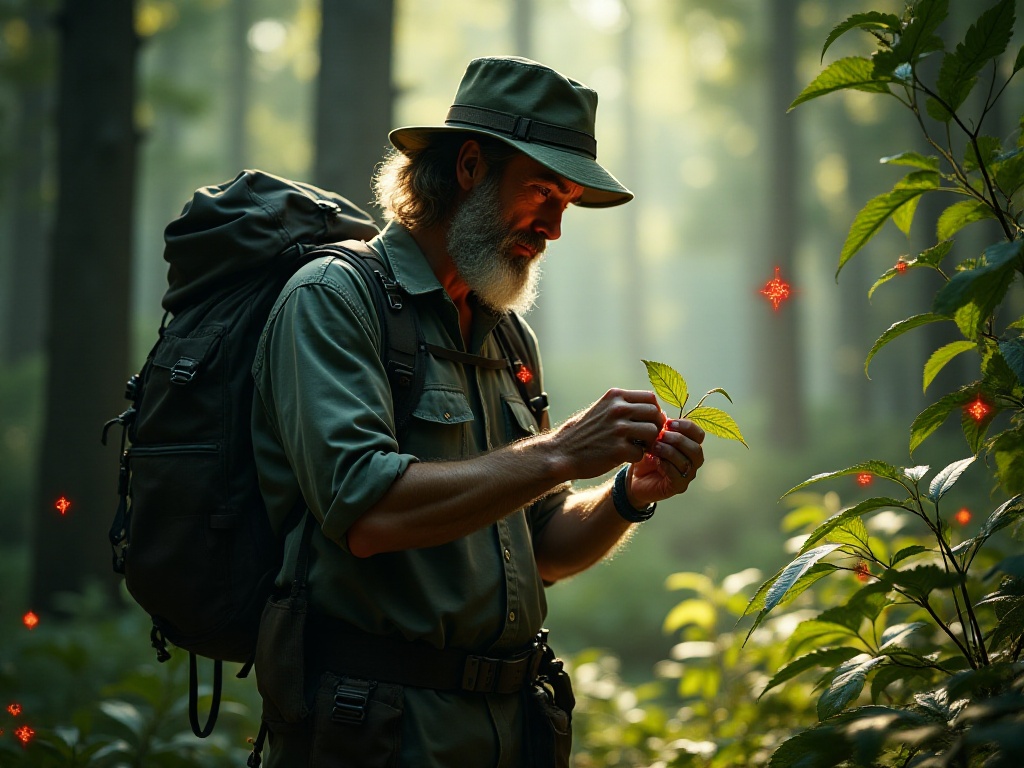
Shelter Skills
In the wilderness, a safe and reliable shelter is often key to survival. Many people might think it's impossible to spend the night outdoors without a tent, but that's not true. With some basic shelter-building skills, you can safely get through difficult situations even without a tent.
I remember once while hiking in a mountainous area, my tent was damaged by a strong gust of wind, with the frame completely deformed and unusable. It was already late, and there wasn't enough time to descend the mountain. I immediately started looking for a spot to build a temporary shelter. First, you need to choose a relatively flat, wind-protected location, preferably with large trees or rock walls as natural barriers. I used my parachute cord to string a main line between two trees, then used surrounding branches to build a simple triangular frame. Then, I layered branches and leaves to create a simple lean-to shelter. While not as comfortable as a tent, it was sufficient to protect me from wind and rain, helping me through that memorable night.
Even with a tent, site selection is a crucial technical matter. First, stay away from dangerous dead trees that could fall at any time; second, avoid valleys or depressions that tend to collect water and have lower temperatures at night; third, pay attention to terrain, choosing slightly elevated spots to prevent water accumulation during rain. It's best to find wind-protected locations to reduce wind pressure on the tent.
There are also details to consider when setting up a tent. For example, the tent door should face away from the prevailing wind direction to prevent wind from blowing directly into the tent. Stakes should be driven into the ground at an angle for better grip. On soft ground, rocks can be used to weigh down the stakes for added stability. Guy lines should maintain proper tension - too loose can cause tent movement, too tight might damage the tent fabric.
I especially recommend setting up simple markers around your campsite. For example, using reflective cord to mark nearby trees, or using glow sticks to mark the route back to camp. This way, you won't lose your way even when nature calls at night. Also, make it a habit to carry lighting tools even for brief departures from camp.
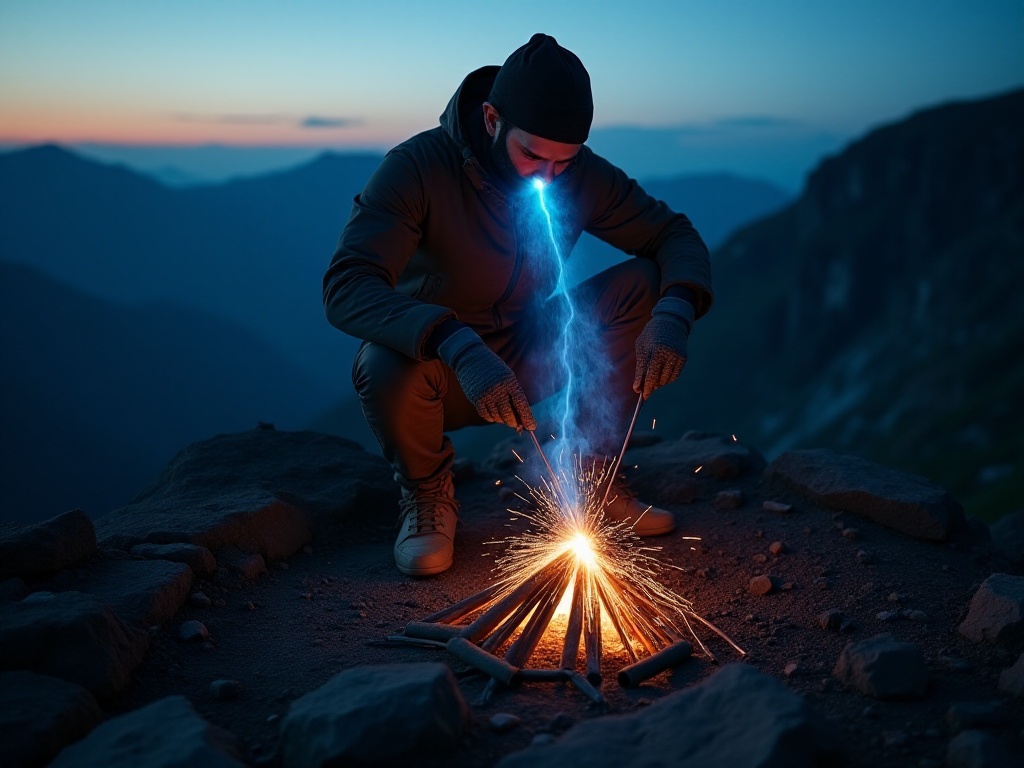
Water and Food
In the wilderness, safe water sources are the primary condition for survival. I've seen too many people drink directly from mountain springs or streams for convenience, which is actually very dangerous behavior. Even water that looks clear and clean might contain various harmful substances, such as viruses, bacteria, parasites, or even pesticide residues and heavy metal contamination.
For water treatment, I usually use a multi-layered approach. My first choice is using a portable water filter - there are many lightweight and practical products available now, typically using multi-layer filtration to remove harmful substances from water. If no filter is available, water purification tablets can be used, but be sure to wait for sufficient reaction time. When neither of these is available, boiling is the last resort. Note that water must be kept at a rolling boil for at least 3-5 minutes to ensure safety.
Regarding water carrying, my advice is to bring more rather than less. Generally, I estimate water needs based on the itinerary, then add 30% as backup. For water bottles, I prefer stainless steel as they can be used directly for boiling water and are durable. Additionally, I distribute water sources in different locations in my backpack, so if one bottle has issues, others are still usable.
Regarding food, unless you're a professional hunter, don't count on hunting for food in the wild. Instead, knowing some common edible wild plants is more practical. For example, dandelions - their roots, stems, leaves, and flowers are all edible and highly nutritious. Shoot bamboo is also a common wild vegetable, similar in texture to bean sprouts, and can be eaten raw or cooked. But it must be emphasized: if you're not 100% certain about a plant, it's better to go hungry than try it.
For carrying food, I have my own configuration plan. Main foods should be high-calorie and easy to store, like compressed biscuits and energy bars. These foods are lightweight, compact, but provide sufficient energy. For snacks, I choose nuts and chocolate - nuts are rich in protein and healthy fats, while chocolate can quickly replenish energy and improve mood. For long-distance hiking, I also bring some dehydrated vegetables and jerky, which although requiring hot water to rehydrate, can provide more balanced nutrition.
Food storage requires attention to detail. All food should be packed in sealed bags to prevent moisture and avoid attracting wildlife with scents. Different types of food should be stored separately to prevent cross-contamination. Note that garbage must be carried out - don't leave it in the wilderness. This is responsible both to the environment and to future visitors.
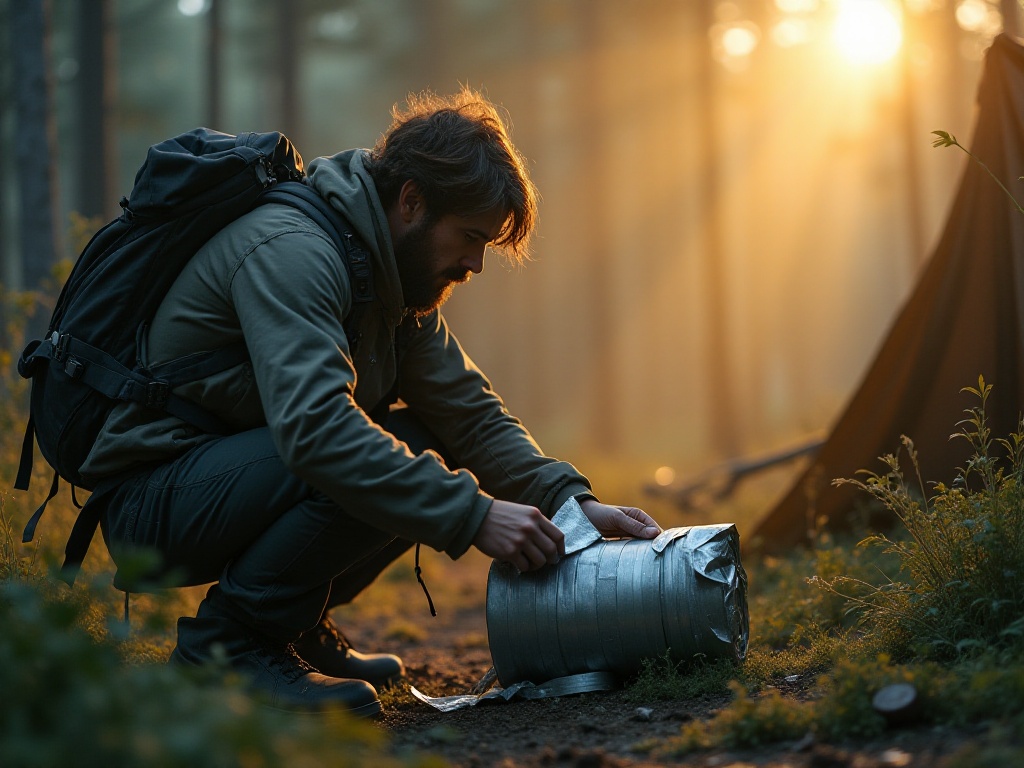
Survival Mindset
Having experienced getting lost in the wilderness twice, I deeply understand the importance of mindset. Panic and confusion often lead to decreased judgment and wrong decisions. I've summarized a simple mantra: Stop, Think, Act.
First is "Stop" - immediately cease movement. Many people's first reaction upon realizing they're lost is to wander around trying to find familiar landmarks. But this often makes the situation worse, as you might get further lost and waste valuable energy.
Then "Think" - calmly assess the situation. Ask yourself: Where was the last known location? Which direction were you heading? What resources are available? What's the weather situation? Through these questions, we can better evaluate our circumstances and formulate response strategies.
Finally "Act" - take action according to priorities. The usual priorities are: seek help (using phone, whistle, or other distress signals), ensure safety (find or build shelter), maintain body temperature, find water sources. Each action should be well-thought-out, avoiding impulsive decisions.
Maintaining a positive and optimistic attitude is also important in the wilderness. I often tell myself: as long as I stay calm, there will always be a solution. This mindset helps us better handle various unexpected situations. Meanwhile, learn to enjoy time in the wilderness and appreciate nature's beauty - this is also an important meaning of outdoor activities.
After so many years of outdoor experience, I increasingly feel that wilderness survival isn't some particularly mysterious skill - the key lies in thorough preparation and the right mindset. As long as you get these two points right, I believe everyone can safely enjoy outdoor activities.
So here's a question: What safety preparations do you make when you go out? Feel free to share your experiences in the comments.



